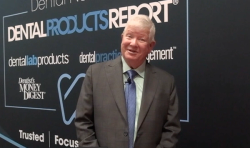- About Us
- Advertise
- Editorial
- Contact Us
- Terms and Conditions
- Privacy Policy
- Do Not Sell My Personal Information
© 2025 MJH Life Sciences™ and Dental Products Report. All rights reserved.
10 Milestones in Automating Dentistry
A look at some of the key developments and innovations in dental products and equipment through the years.
In a world where artificial intelligence (AI) can handle many tasks on its own, and a range of automated services and processes help us daily, it can be easy to forget just how far back the history of automation actually stretches. From the first simple machines to our modern computerized marvels, humankind has long sought ways to make common tasks easier through the use of technology.
Dentistry is no different. Modern dental practices use any number of technologies and solutions to make treatment more effective, more efficient, and less onerous for patients and clinicians alike. The history of dentistry is filled with technological breakthroughs, and any time a machine is used to handle a task previously done manually, it’s a move to employ automation. Here are 10 of these milestones in dental automation.
1875 – George F. Green patents the first electric dental drill.
1877 – The Wilkerson chair is the first hydraulic dental chair.
1879 – Charles Chamberland invents the autoclave sterilizer.
1939 – The first electric toothbrush is developed in Switzerland.
1957 – John Borden introduces the first air-driven contra-angle dental handpiece.
1985 – Dentistry enters the era of computer-aided design and computer-aided manufacturing (CAD/CAM) with the debut of CEREC, the profession’s first CAD/CAM solution.
1989 – Dentrix launches, representing the first dental practice management software for computers running Microsoft Windows.
2003 – Planet DDS launches Denticon, the industry’s first cloud-based practice management application.
2017 – The Yomi from Neocis becomes the first FDA-approved robot-assisted dental implant system.
2017 – The first completely robotic dental implant procedure is completed in China.
These 10 milestones all represent leaps forward for the dental industry. Each is a mechanical or computerized system designed to accomplish a previously manual task. Although these innovations stretch back more than a century, the pace of such breakthroughs is increasing. In recent years, automation has come to everything, from patient communications and practice marketing to radiograph reading and treatment planning.

 Download Issue: Dental Products Report February 2021
Download Issue: Dental Products Report February 2021

